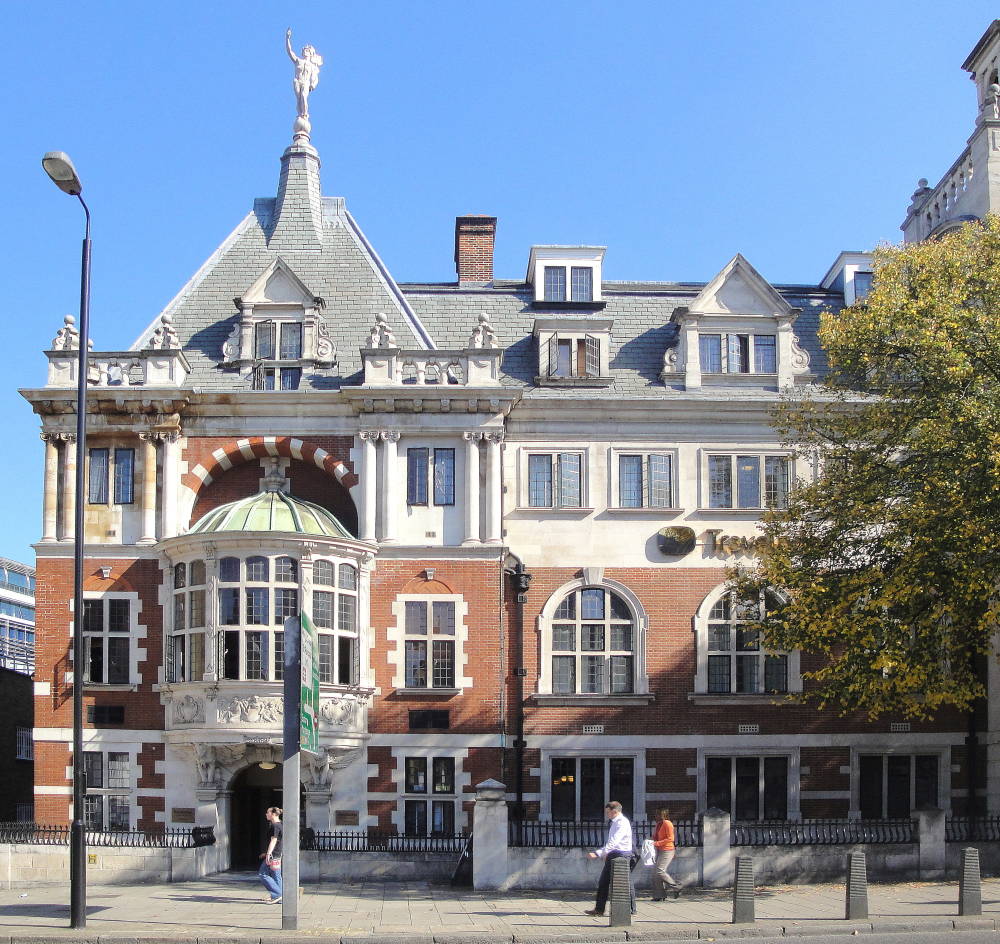#9318. Edwardian Façade with Contrasting Materials and Domed Bay Window

The façade presented in the image is an outstanding example of Edwardian architecture from the early 20th century, combining elements of Neo-Baroque and English Renaissance. The building features a complex and richly decorated exterior. The façade is characterized by red brickwork on the first and second floors with elegant white stone details, creating a striking contrast.
Particularly notable is the central bay window with a dome covered in patinated copper, which adds architectural depth to the building. The mansard-style roof with gray slate is crowned with a white statue that serves as the dominant element of the entire composition. Decorative elements are placed along the entire pediment, including bas-reliefs and sculptural details, demonstrating the craftsmanship of stonemasons from that period.
The window openings vary in shape and size — arched on the ground floor and rectangular on the upper floors, creating a rhythmic composition. The entrance is adorned with a decorative arch with rich ornamentation, giving the building solemnity and monumentality.
In modern private construction, one can borrow the principle of contrasting material combinations (brick and light stone), use bay windows to give a house volume and character, and apply decorative elements on pediments to create a unique façade identity. Slate roof covering also remains a practical and aesthetically pleasing solution that has not lost its relevance.